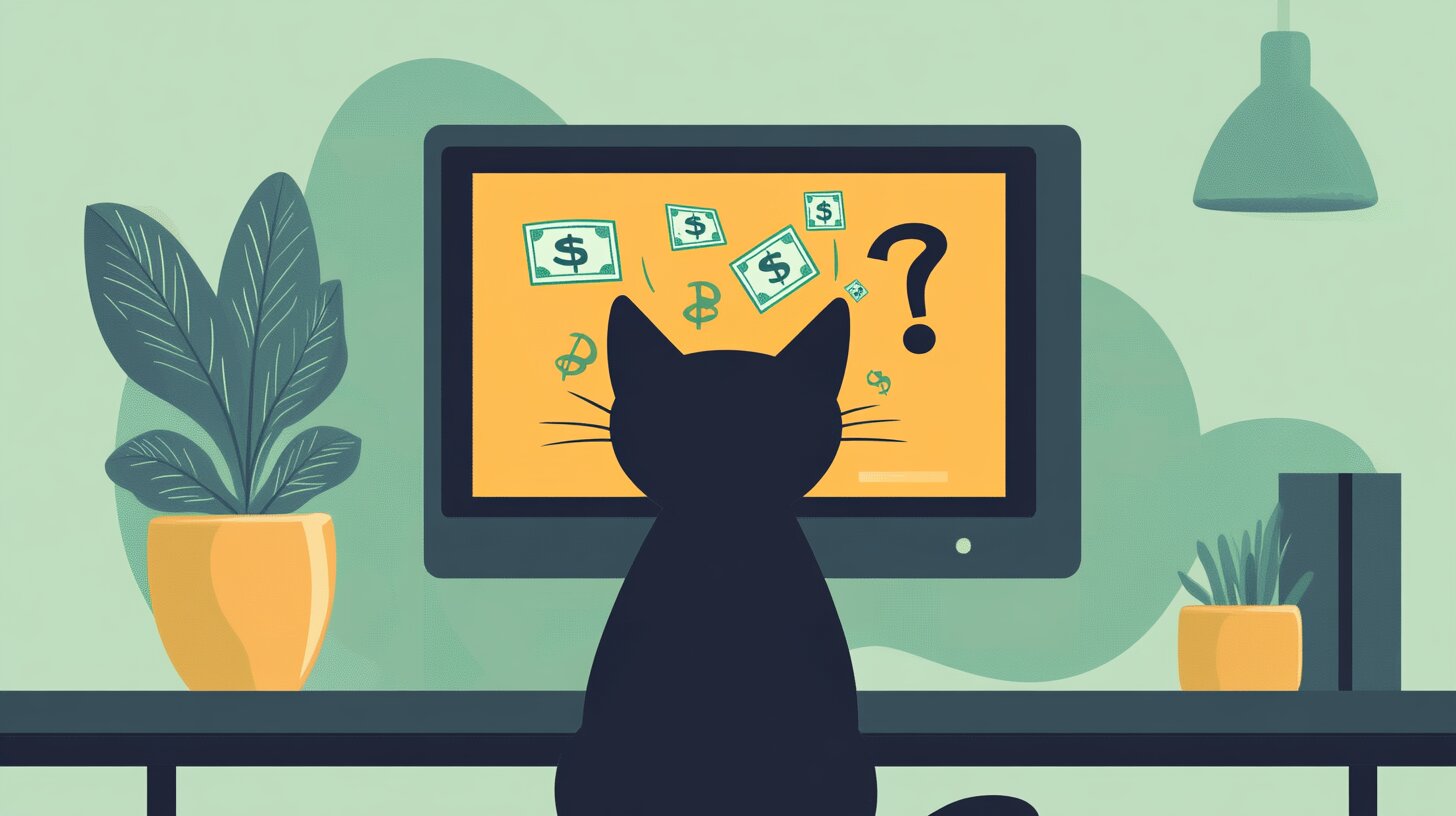Blog Monetization: Wait, You Can Actually Make Money?
Having a tough time with the concept of blog monetization? You’re not alone—learning how to monetize can feel overwhelming. The good news is you don’t need a huge audience or years of experience to start earning.
In this post, I’ll share simple ways to turn your blog into income. Stick around—you might just find the answer you’ve been looking for!
KEY TAKEAWAYS
• Start earning from day one through AdSense and Amazon Affiliates, with first earnings typically appearing in 1-3 months.
• Begin with beginner-friendly affiliate marketing platforms for passive income opportunities.
• Create and sell digital products with high profit margins using platforms like Kajabi and Gumroad.
• Optimize blog content for search engines to increase traffic and monetization potential.
• Leverage social media for visibility and brand partnerships, potentially earning $150+ per sponsored post.
When to Start Monetizing Your Blog
You can start making money as soon as you launch your blog. Growing an audience while testing ways to earn is a smart move.
Monetize from the beginning
I started monetizing my blog the moment I published my first post. Waiting doesn’t make sense when tools like Google AdSense and affiliate programs are easy to set up. For example, joining Amazon Affiliate Program is quick and lets you earn passive income with each sale.
Starting early doesn’t mean huge earnings right away, but it creates a solid base. In 1-3 months, bloggers usually see their first client or sale from affiliate marketing or digital products.
Combining one active strategy like sponsored posts and one passive stream can jumpstart your blogging business effectively.
Building the right audience simultaneously
Finding the right audience is key to monetizing a blog. I focus on building trust while growing my email list. A good target is 1,000-2,000 subscribers. This helps create a base of readers who will stick around and engage with content.
I also work on SEO from the start to get organic traffic within 3-6 months. Social media marketing boosts visibility further. Platforms like Instagram or Pinterest help attract an active audience fast.
Mixing these strategies ensures quality readers who are likely to click affiliate links or buy digital products later on!
Proven Strategies for Blog Monetization
Making money from a blog takes smart strategies. Use methods that fit your style and goals to grow income quickly.
Affiliate marketing
Affiliate marketing is one of the easiest ways to earn passive income from a blog. I share links to products or services, and when someone clicks and buys, I get a commission. Popular programs like Amazon Affiliates, ShareASale, or Commission Junction make it simple to start.
It usually takes 1-3 months to see the first sale if done right. I focus on my blog audience’s needs by promoting useful items they love. Plus, understanding SEO helps me rank better in searches and gets more traffic for better earnings.
Blogging with affiliate marketing = earning while helping others.
Sponsored posts and brand deals
Sponsored posts and brand deals can pay well. Some brands offer over $150 for a single piece of User Generated Content (UGC). If you build strong connections, you could make $500 or more per month from client work.
It’s key to show your value. A clear media kit helps brands see why they should work with you. Start small, but focus on delivering quality content that matches the brand’s goals.
In 1-3 months, finding your first client is possible if you stay consistent!
Selling digital products and courses
I make passive income by selling digital products. These can include eBooks, templates, or printables. People download them instantly after purchase. This means no shipping hassles and low overhead costs.
Some bloggers earn thousands every month with this approach, though it takes effort at first.
Creating and selling online courses also works well. Platforms like Skillshare or Kajabi make setup easy. I’ve seen beginners make their first sale in just 1-3 months. Sharing my knowledge helps others while boosting my blogging business revenue!
Display advertising with content ads
Content ads work well for earning passive income. Programs like Mediavine, Ezoic, and Google AdSense help place these ads on your blog. With 50,000 to 100,000 visitors each month, you could make thousands of dollars in ad revenue.
Some bloggers using Mediavine earn about $2,000 monthly from display advertising alone.
Ads blend into your content without taking away the reader’s experience. You don’t need massive traffic to start either. It’s smart to position ads on pages with high traffic or valuable keywords.
Google AdSense makes this easy for beginners while others like Mediavine are better for larger audiences.
Building Trust in Affiliate Marketing
Trust starts with honesty. I only promote products or services I genuinely use or believe in. If I’ve tried something and it works, I share my experience openly. Readers can sense fake promotions, so being real is key.
Clear disclosure also builds trust fast. Every time I post an affiliate link, I let them know upfront it’s part of how the blog earns income. This creates transparency and respect between me and my audience.
Enhancing Blog Revenue
Boosting your blog income takes effort and smart strategies. Small changes like improving content or using better tools can make a big difference.
Optimizing content for SEO
I focus on using SEO tools like Google Search Console to optimize my blog. Picking the right keywords is key for blog traffic and passive income. I avoid keyword stuffing since it hurts rankings.
Instead, I naturally include keywords like “affiliate marketing” or “digital products” where they fit best.
It takes 3-6 months to see results with SEO, so patience is vital. Writing clear content that solves reader questions works better than overloading posts with terms. I also check site speed because slow blogs lose visitors fast.
These small changes can improve monetizing a blog without spending extra money!
Leveraging social media for broader reach
Social media helps grow blog traffic fast. I share my posts on Instagram, Pinterest, and Facebook to reach new readers. Platforms like Instagram Reels and Pinterest are great for ads too.
Visuals grab attention quickly.
I also engage with followers daily. This builds trust and keeps them coming back. Brand deals or UGC can bring in $150+ per piece! Social platforms multiply your audience without spending much money upfront.
Effective email marketing strategies
I build an email list early. It’s a must for blog monetization. My goal is to grow 1,000–2,000 subscribers fast. A smaller list of 500–1,000 works if I launch digital products or courses first.
I send helpful content often and keep my tone friendly. Each email must give value—tips, guides, or tools tied to blogging goals like affiliate marketing income or promoting digital products I sell on my site.
Clear calls-to-action guide readers to click links where they spend money!
Tools and Resources for Efficient Monetization
Using the right tools can save you time and effort. They help make your blog more profitable by improving content, ads, and sales setups.
SEO tools for content optimization
SEO tools help boost blog traffic and improve content visibility. They make monetizing a blog easier by attracting the right audience.
- Google Search Console
This free tool tracks your site’s performance. It shows how readers find your blog and helps fix SEO issues, like broken links or slow pages. - Ubersuggest
It finds popular keywords you can use in your content. It also gives tips on improving existing posts for better search rankings. - Yoast SEO Plugin
This plugin works with WordPress blogs. It guides you to optimize headlines, meta descriptions, and readability for better results. - Ahrefs
It analyzes competitors’ websites. I use it to learn what other bloggers rank for and create better articles to compete. - SEMrush
This all-in-one tool tracks keyword performance, backlinks, and traffic trends over time. It also suggests new topics for my niche. - AnswerThePublic
It helps me understand what questions people ask online about my niche. This way, I create content that matches their needs. - Canva for Graphics SEO
Good visuals impact search rankings too! Canva makes creating fast-loading images simple without affecting site speed.
Proper SEO tools save time and increase passive income opportunities through affiliate marketing or Google AdSense ads quicker!
Platforms for affiliate marketing
Affiliate marketing is a great way to earn passive income with a blog. You can partner with platforms that fit your niche and audience.
- Amazon Affiliate Program lets you promote millions of products. It’s easy to join, and you earn commissions on sales made through your links.
- ShareASale connects bloggers with thousands of companies. Select programs that match your content and start earning commissions.
- Commission Junction (CJ) is another top platform for partnerships. Big brands use CJ, making it perfect for those seeking trusted names.
- Rakuten Advertising offers tools and analytics for affiliates. This helps boost transparency and track earnings better.
- Impact connects creators with brands in various industries. It’s good for bloggers looking to grow with flexible options.
- Awin is beginner-friendly and has partnerships worldwide. They work with both small businesses and big companies alike.
- ClickBank focuses on digital products like e-books or courses. It’s ideal if you want high commission rates in specific niches.
- FlexOffers gives access to many affiliate programs in one place. They support bloggers by helping them find the right deals fast.
- Etsy allows promoting unique handmade items or print-on-demand goods. Perfect for creative blogs focusing on arts or crafts themes.
- Shopify owns an affiliate program targeting e-commerce audiences directly promoting online store setups or tools suitable for sellers
Services for creating and selling digital products
You can make money from your blog by selling digital products. These tools and services make it easy to create and sell your own items.
- Kajabi helps with creating courses or memberships. It offers tools for videos, payments, and email marketing all in one place.
- Skillshare allows you to teach classes online. You earn money based on how long students watch your content.
- Squarespace Members Area lets you sell exclusive content to members. You can offer e-books, guides, or even workshops here.
- Canva is perfect for designing templates, planners, or printables that you can sell.
- Gumroad makes it simple to upload and sell digital downloads like e-books or art files.
- Thinkific works well for building and selling detailed online courses.
- Teachable allows bloggers to share knowledge through lessons while handling student management easily.
- WooCommerce connects with WordPress blogs so you can set up a store quickly for any type of product.
- Etsy Digital Products Section enables you to market templates and other unique items without maintaining your own site.
- Use these platforms according to the type of product you’re offering: courses, designs, or membership-based materials models fit different needs best!
Common Misconceptions About Blog Monetization
Many think you need a huge audience or years of work to start earning, but that’s not true. Let’s clear up these myths and get you on the right path!
It’s too early to monetize
It’s never too early to monetize a blog. I started the day I published my first post. You don’t need huge blog traffic or tons of followers to begin earning. Even with low numbers, tools like Google AdSense and the Amazon Affiliate Program can generate income.
I recommend starting with one active and one passive income stream. Active options include sponsored posts or brand deals. Passive ones might be affiliate marketing or selling digital products like eBooks.
Some bloggers make their first sale within 1-3 months using these strategies. Waiting may only delay opportunities for passive income growth in your blogging business!
Needing massive traffic to start earning
You don’t need huge blog traffic to start earning money. I made my first dollar with less than 1,000 visitors a month by joining the Amazon Affiliate Program. Sponsored posts can also pay well, even for smaller blogs.
Brands look at your niche and engagement rather than just numbers.
Affiliate marketing works great without massive traffic too. A focused audience often converts better than random clicks from thousands of people. With Google AdSense or Mediavine, bigger traffic helps you earn more—like $2,000/month for 50,000 views—but it’s not the only way to monetize a blog early on!
Monetization slows down content quality
Chasing blog monetization without care can hurt content quality. Oversized ads, forced affiliate links, or too many sponsored posts annoy readers. People come for useful, honest content—not constant sales pitches.
I focus on balancing income and value. Good SEO tools like Google Search Console help make passive income while keeping the blog user-friendly. Building trust with my audience always comes first in my blogging business strategy—profits follow naturally.
FAQs about Blog Monetization
Starting to earn from a blog can feel exciting but also puzzling. Let’s clear up some common questions to help make the journey smoother and more rewarding.
How long does it typically take to start earning?
It usually takes 1-3 months to earn your first money from a blog. This could be through affiliate marketing, selling digital products, or landing sponsored posts. Building trust with an audience and offering value speeds this up.
SEO often shows results after about 3-6 months. More traffic means more chances to monetize. Tools like Google AdSense or the Amazon Affiliate Program can help boost income once visitors increase.
Can you monetize a blog for free?
You can monetize a blog for free, but it’s tricky. If you’re using free platforms like WordPress.com or Blogger, they limit options like adding Google AdSense or running affiliate marketing programs.
These platforms often control ad spaces and take a cut of the revenue.
Selling digital products is tougher without investing in tools or hosting. Free setups lack flexibility to design pages for things like courses or ebooks. To earn faster, picking low-cost paid options helps unlock more monetization features.
What are the essential tools for beginner bloggers?
I use WordPress for blogging. It’s great for customizing layouts with easy design templates. Squarespace works well too, especially for simple setups.
SEO tools like Google Search Console help me find the right keywords and track my blog traffic. Ubersuggest is another favorite to improve ranking. For affiliate marketing, joining programs like Amazon Affiliate Program gives an easy start to earning passive income.
Conclusion
Making money from blogging is real and doable. Start small, grow your audience, and choose strategies that work best for you. Whether it’s affiliate marketing or selling digital products, the possibilities are endless.
Focus on value, trust, and consistency. Your blog can become a strong source of income with effort and time.
FAQs
1. How can I start monetizing a blog?
You can monetize a blog by using affiliate marketing, selling digital products, or setting up sponsored posts. Tools like Google AdSense and the Amazon Affiliate Program are also helpful.
2. What is affiliate marketing in blogging?
Affiliate marketing lets you earn money by promoting products or services on your blog. When readers click your links and make purchases, you get paid.
3. Can I make passive income from blogging?
Yes, blogs can generate passive income through strategies like affiliate programs, digital product sales, and ads that run automatically on your site.
4. Why do I need a media kit for my blogging business?
A media kit helps attract sponsors by showing details about your blog traffic, audience reach, and collaboration options like sponsored posts.
5. Are there tools to help me grow my blogging business?
Yes! Blogging tools can help with writing content as a copywriter would while managing ads or improving SEO to boost traffic for better monetization results.



